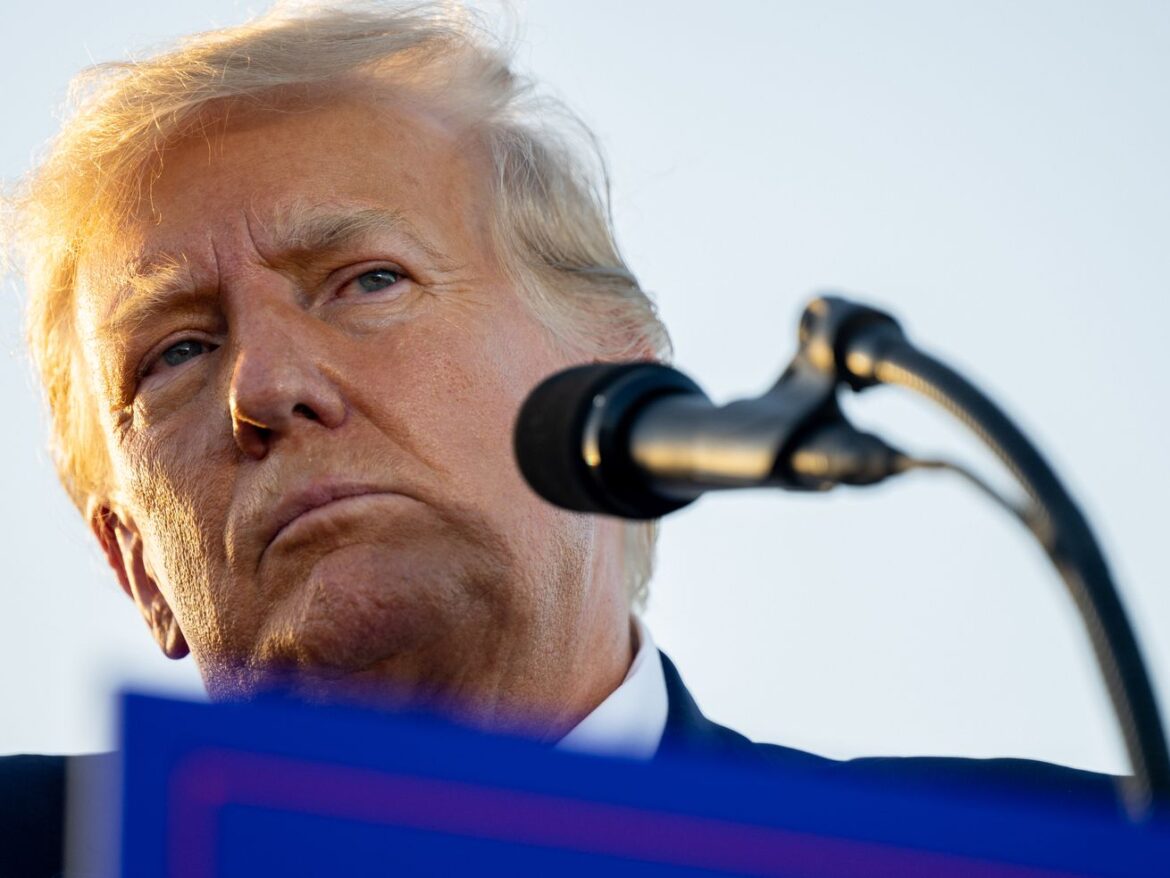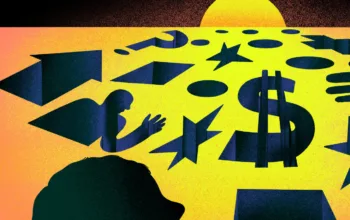He’ll appear in court, and the charges against him will officially be unsealed.
Former President Donald Trump officially surrendered himself to authorities on Tuesday after getting indicted last week by a grand jury on multiple counts of what are believed to be business fraud-related charges.
Trump arrived at the New York district attorney’s office in lower Manhattan around 1:24 pm local time in order to turn himself in to law enforcement. Now that he’s in custody, he will have his fingerprints taken and face a reading of the charges against him in an arraignment later on Tuesday.
“Seems so SURREAL,” Trump wrote in a Truth Social post ahead of the surrendering. “WOW, they are going to ARREST ME. Can’t believe this is happening in America.”
An arraignment is effectively a court hearing when the charges are read aloud to Trump and he’s able to enter what’s expected to be a “not guilty” plea. At the arraignment, the judge will also determine whether Trump can be released without bail, which he likely will be since he’s being charged with nonviolent crimes.
The charges are still under seal, but they are expected to address Trump’s involvement in hush money payments made to porn actress Stormy Daniels and related efforts to falsify business records. The indictment is a historic one, making Trump the only former president who’s ever been criminally charged.
The news brings up a few key questions around what an indictment is and how arraignment works.
Basically, an indictment means a person is formally being charged with a felony by a grand jury. Charging someone in this manner is required in many felony cases, like the one involving Trump. As laid out by the New York State Constitution, Trump had to be indicted by a grand jury — which gives members of the community a say — before prosecutors could proceed further. This differs from misdemeanor cases when a prosecutor can just bring the charges without a grand jury having to file them via an indictment, adding one more step. Now that Trump has been indicted, Manhattan District Attorney Alvin Bragg is able to coordinate his surrender and pursue a trial.
“When a person is indicted, they are given formal notice that it is believed that they committed a crime,” notes the Department of Justice. “The indictment contains the basic information that informs the person of the charges against them.”
An indictment is a key step in many felony cases. First, a prosecutor decides to pursue a case against a person and presents witnesses and evidence in front of what’s known as a grand jury. The grand jury — a randomly selected group of 16 to 23 people — will weigh the information and then decide whether they believe there is probable cause that this person committed a crime and if there should be a trial. Grand juries are used in felony cases and are intended to give the courts and broader citizenry a voice in how crimes are treated versus allowing prosecutors to move forward with charges unilaterally.
If at least 12 jurors believe there is probable cause and vote to indict, then the person is officially charged and the case has the potential to go to trial. The grand jury does not determine if a person is guilty or not guilty like a trial jury does, however.
In Trump’s case, enough members of the Manhattan grand jury concluded that there is sufficient evidence to charge him with a crime. The indictment includes specific information about the charges and explains what laws the jurors believe Trump broke. At this point, courts have not ruled on whether he is guilty or not; the grand jury has simply determined that he should be charged and that the case can go to trial. Following an indictment, a prosecutor can decide whether to pursue these charges or to drop them if there’s insufficient evidence. That the process appears to be going forward signals Bragg believes in the grand jury’s findings.
Trump’s next step is to surrender to law enforcement and have the charges read to him in court in what’s known as an arraignment. Trump is reportedly expected to turn himself in on Tuesday, when he’ll be taken into police custody and arrested, at which point his fingerprints and mugshot will also be taken. He’ll then be arraigned later in the day, when he’ll be able to enter how he pleas in the case.
“We will very loudly and proudly say ‘not guilty,’” Trump’s lawyer Joe Tacopina said while appearing on CNN’s State of the Union on Sunday.
The trial process for the case could ultimately be a drawn-out one since Trump is expected to contest the charges. If convicted, he could be sentenced to as much as four years in prison, the penalty for falsifying business records. Trump is still able to run for president despite the indictment, and would continue to be able to do so even if he were convicted and had to serve jail time.
Update, April 4, 1:40 pm ET: This story, originally published on March 31, has been updated multiple times, most recently with new information about Trump’s arrest.



